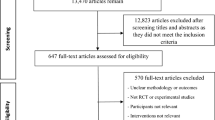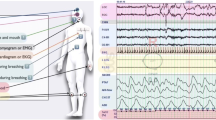Abstract
Purpose
Obstructive sleep apnea syndrome (OSAS) is an important, modifiable risk factor in the pathophysiology of arrhythmias including atrial fibrillation (AF). The purpose of the study was to evaluate cardiac electrophysiologists’ (EPs) perception of OSAS.
Methods
We designed a 27-item online Likert scale–based survey instrument entailing several domains: (1) relevance of OSAS in EP practice, (2) OSAS screening and diagnosis, (3) perception on treatments for OSAS, (4) opinion on the OSAS care model. The survey was distributed to 89 academic EP programs in the USA and Canada. While the survey instrument questions refer to the term sleep apnea (SA), our discussion of the diagnosis, management, and research on the sleep disorder is more accurately described with the term OSAS.
Results
A total of 105 cardiac electrophysiologists from 49 institutions responded over a 9-month period. The majority of respondents agreed that sleep apnea (SA) is a major concern in their practice (94%). However, 42% reported insufficient education on SA during training. Many (58%) agreed that they would be comfortable managing SA themselves with proper training and education and 66% agreed cardiac electrophysiologists should become more involved in management. Half of EPs (53%) were not satisfied with the sleep specialist referral process. Additionally, a majority (86%) agreed that trained advanced practice providers should be able to assess and manage SA. Time constraints, lack of knowledge, and the referral process are identified as major barriers to EPs becoming more involved in SA care.
Conclusions
We found that OSAS is widely recognized as a major concern for EP. However, incorporation of OSAS care in training and routine practice lags. Barriers to increased involvement include time constraints and education. This study can serve as an impetus for innovation in the cardiology OSAS care model.






Similar content being viewed by others
Data availability
The datasets generated during and/or analyzed during the current study are available from the corresponding author on reasonable request.
References
Punjabi NM (2008) The epidemiology of adult obstructive sleep apnea. Proc Am Thorac Soc 5(2):136–143. https://doi.org/10.1513/pats.200709-155MG
Kwon Y, Logan J, Pusalavidyasagar S, Kasai T, Cheong CSJ, Lee CH (2019) Sleep apnea and heart. Sleep Med Res 10(2):67–74. https://doi.org/10.17241/smr.2019.00493
Javaheri S, Barbe F, Campos-Rodriguez F, Dempsey JA, Khayat R, Javaheri S, Malhotra A, Martinez-Garcia MA, Mehra R, Pack AI, Polotsky VY, Redline S, Somers VK (2017) Sleep apnea: types, mechanisms, and clinical cardiovascular consequences. J Am Coll Cardiol 69(7):841–858. https://doi.org/10.1016/j.jacc.2016.11.069
Kwon Y, Koene RJ, Johnson AR, Lin GM, Ferguson JD (2018) Sleep, sleep apnea and atrial fibrillation: questions and answers. Sleep Med Rev 39:134–142. https://doi.org/10.1016/j.smrv.2017.08.005
Kwon Y, Koene RJ, Kwon O, Kealhofer JV, Adabag S, Duval S (2017) Effect of sleep-disordered breathing on appropriate implantable cardioverter-defibrillator therapy in patients with heart failure: a systematic review and meta-analysis. Circ Arrhythm Electrophysiol 10(2):e004609. https://doi.org/10.1161/CIRCEP.116.004609
Chung F, Abdullah HR, Liao P (2016) STOP-Bang Questionnaire: a practical approach to screen for obstructive sleep apnea. Chest 149(3):631–638. https://doi.org/10.1378/chest.15-0903
Southwell C, Moallem M, Auckley D (2008) Cardiologist’s knowledge and attitudes about obstructive sleep apnea: a survey study. Sleep Breath 12(4):295–302. https://doi.org/10.1007/s11325-008-0170-1
ACGME 2020 ACGME Program Requirements for Graduate Medical Education in Cardiovascular Disease. 56
Ng CY, Liu T, Shehata M, Stevens S, Chugh SS, Wang X (2011) Meta-analysis of obstructive sleep apnea as predictor of atrial fibrillation recurrence after catheter ablation. Am J Cardiol 108(1):47–51. https://doi.org/10.1016/j.amjcard.2011.02.343
Shukla A, Aizer A, Holmes D et al (2015) Effect of obstructive sleep apnea treatment on atrial fibrillation recurrence: a meta-analysis. JACC Clin Electrophysiol 1(1–2):41–51. https://doi.org/10.1016/j.jacep.2015.02.014
McEvoy RD, Antic NA, Heeley E et al (2016) CPAP for prevention of cardiovascular events in obstructive sleep apnea. N Engl J Med 375(10):919–931. https://doi.org/10.1056/NEJMoa1606599
Traaen GM, Aakerøy L, Hunt TE et al (2021) Effect of continuous positive airway pressure on arrhythmia in atrial fibrillation and sleep apnea: a randomized controlled trial. Am J Respir Crit Care Med 204(5):573–582. https://doi.org/10.1164/rccm.202011-4133OC
Peker Yüksel, Balcan Baran (2018) “Cardiovascular outcomes of continuous positive airway pressure therapy for obstructive sleep apnea.” Journal of thoracic disease 10(Suppl 34):S4262–S4279. https://doi.org/10.21037/jtd.2018.11.48
Rosenberg R, Hirschkowitz M, Rapoport DM, Kryger M (2019) The role of home sleep testing for evaluation of patients with excessive daytime sleepiness: focus on obstructive sleep apnea and narcolepsy. Sleep Med 56:80–89. https://doi.org/10.1016/j.sleep.2019.01.014
Healey JS, Wharton S, Al-Kaabi S, Pai M, Ravandi A, Nair G, Morillo CA, Connolly SJ (2006) Stroke prevention in patients with atrial fibrillation: the diagnosis and management of hypertension by specialists. Can J Cardiol 22(6):485–488. https://doi.org/10.1016/s0828-282x(06)70265-3
Kwon Y, Surkin LA, Lee CH (2018) Some cardiologists’ perspective on past, current, and future of sleep medicine. Am J Cardiol 121(3):388–389. https://doi.org/10.1016/j.amjcard.2017.10.034
Shaikh Z (2020) Sleep medicine and the cardiologist. Heart 106(11):864–865. https://doi.org/10.1136/heartjnl-2019-316027
Collop NA (2005) Obstructive sleep apnea. Am J Cardiovasc Drugs 5:71–81
Chai-Coetzer CL, Antic NA, Rowland LS, Reed RL, Esterman A, Catcheside PG, Eckermann S, Vowles N, Williams H, Dunn S, McEvoy RD (2013) Primary care vs specialist sleep center management of obstructive sleep apnea and daytime sleepiness and quality of life: a randomized trial. JAMA 309(10):997–1004. https://doi.org/10.1001/jama.2013.1823
AASM announces New Specialty Practice Accreditation Program 2022 American Academy of Sleep Medicine – Association for Sleep Clinicians and Researchers. (2022, February 17). Retrieved April 6, 2022, from https://aasm.org/aasm-announces-new-specialty-practice-accreditation-program/#:~:text=Currently%2C%20eligibility%20for%20the%20new,according%20to%20AASM%20practice%20standards
Acknowledgements
We thank the Center for Survey Research at the University of Virginia for their assistance with the survey construction. We acknowledge Dr. Robert Bache, University of Minnesota Professor Emeritus, and Dr. John DiMarco, University of Virginia Professor Emeritus, for their advice on the study.
Funding
This research was supported by ResMed Foundation Public Awareness program and NIH R21HL140432 and R21HL150502.
Author information
Authors and Affiliations
Corresponding author
Ethics declarations
Ethics approval
The manuscript does not contain clinical studies or patient data. This is a survey study. The University of Virginia Research Ethics Committee has confirmed that no ethical approval is required.
Conflict of interest
The authors declare they have no conflict of interest. Dr. Neal Chatterjee: disclosures include speakers board for Abbott and Sanofi. Dr. Jared Bunch: disclosures include research grants for Altathera, Boehringer Ingelheim, and Boston Scientific. There are no personal compensation or honorarium received from these companies.
Additional information
Publisher's note
Springer Nature remains neutral with regard to jurisdictional claims in published maps and institutional affiliations.
Rights and permissions
About this article
Cite this article
Dong, M., Liu, L., Bilchick, K.C. et al. Academic cardiac electrophysiologists’ perspectives on sleep apnea care. Sleep Breath 27, 561–568 (2023). https://doi.org/10.1007/s11325-022-02636-9
Received:
Revised:
Accepted:
Published:
Issue Date:
DOI: https://doi.org/10.1007/s11325-022-02636-9




